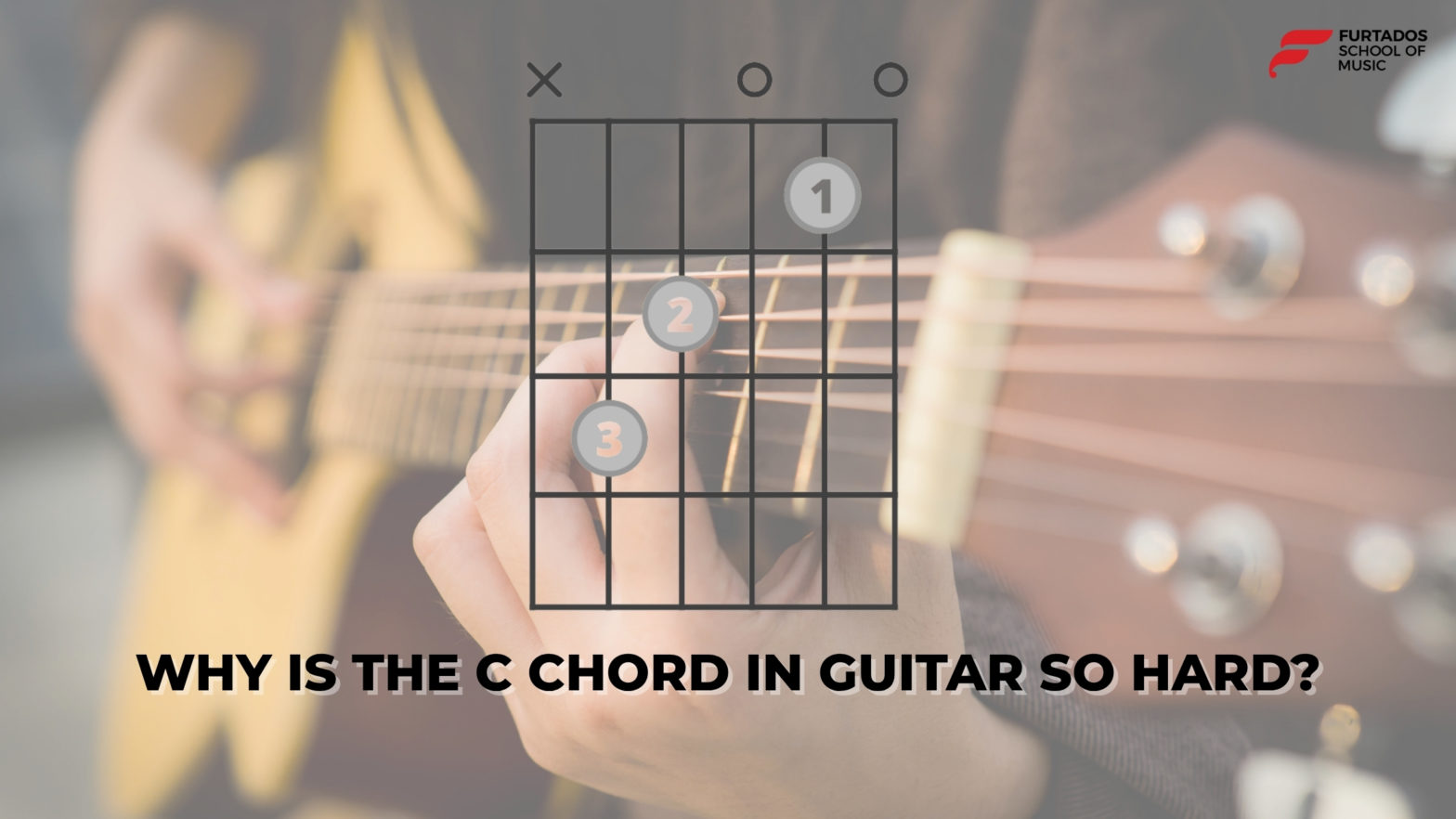In this blog, we’ll explore why the C chord in Guitar feels so tough, how to approach it correctly, and why it’s worth mastering. Whether you’re a young student, a hobby learner, or a parent supporting your child, this guide will help you navigate the early bumps on the road to confident playing.
Why is the C chord in Guitar so hard?
For most beginners, the C major chord is among the first five chords they learn. But it also causes the most frustration—and here’s why:
1. Finger Stretch
The C chord requires you to stretch your third finger (ring finger) across three frets, which can be difficult when your hands are still getting used to the fretboard.
2. Precision Required
Each finger has to sit cleanly behind the fret to avoid muting other strings, especially the first (high E) string. It demands accuracy, which beginners are still developing.
3. Unfamiliar Muscle Memory
If you’ve never played guitar before, your hand is not used to holding this kind of shape. It takes time to build that muscle memory and finger independence.
4. Buzzing or Muted Notes
It’s common for beginners to accidentally touch adjacent strings while forming the C chord, leading to muted or buzzing sounds. This makes you feel like you’re doing it wrong, even if you’re close.
Why You Should Still Learn It
Even though it feels hard at first, the C major chord is one of the most foundational chords in music. It appears in thousands of songs, across genres like pop, rock, gospel, and classical.
That’s why it’s part of almost every guitar chords for beginners curriculum. Once you master it, you unlock the ability to play entire chord progressions and full songs with ease.
How to Play C Chord on Guitar
Let’s break it down slowly. Here’s how to play C chord on guitar step by step:
- Index Finger: 1st fret of the 2nd (B) string
- Middle Finger: 2nd fret of the 4th (D) string
- Ring Finger: 3rd fret of the 5th (A) string
- Strum: From the 5th string down (do not strum the 6th string)
Quick Tips:
- Keep your fingers arched to avoid touching other strings.
- Position your thumb behind the neck for more reach.
- Practice slowly and repeatedly until each string rings clean.
- Try finger-placement exercises without strumming to build muscle memory.
Don’t worry if it takes a few days—or even weeks—to get it right. Everyone struggles with it in the beginning!
Why Practice Matters
Just like learning how to ride a cycle or write in cursive, playing guitar is all about repetition and confidence. Even if the C chord feels impossible today, consistent 10-minute practice sessions can change everything within a week.
The key is to not give up—because once your fingers adjust, the C chord will become as natural as any other.
Learning Guitar the Right Way
The C chord isn’t the only hurdle you’ll face, but it’s one of the most important to cross early on. That’s why structured learning is so helpful.
At Furtados School of Music (FSM), we offer step-by-step guitar classes designed specifically for beginners. Whether your goal is to play your favorite song, jam with friends, or just build a new skill, FSM’s method makes the process fun and effective.
What FSM offers:
- Certified guitar instructors with years of experience
- Beginner-friendly curriculum covering chords, rhythm, and technique
- Live, online interactive classes for kids and adults
- Regular feedback and performance opportunities
- Flexible class timings to fit your schedule
Final Strum: Every Pro Was Once a Beginner
So, if you’re struggling and asking yourself why is C chord so hard on guitar, just remember: every guitarist has been there. Stick with it, practice daily, and most importantly—enjoy the process.
Once the C chord becomes second nature, your confidence will skyrocket and your playing will sound cleaner and richer.
Ready to start your guitar journey? Join FSM’s beginner Guitar classes and let the music begin—one chord at a time.
